By Louise Irvine
With the New Moon on February 10, the Chinese Year of the Rabbit ends and the Year of the Dragon begins. Chinese years follow the moon cycle, and the dates differ slightly every year. The Year of the Dragon will end on January 28, 2025. It is the only symbol in the Chinese horoscope which is mythical and not a real animal. The new Dragon Room at WMODA celebrates the fabulous creature’s role in the Fired Arts with spectacular pieces from Wedgwood, Doulton and Lladró.
The Chinese zodiac is based on the Chinese calendar that assigns an annual animal and its perceived attributes. The dragon controls water and weather and was a cultural symbol of the emperor’s power. The Year of the Dragon is seen as a year of good fortune, signifying strength, health and power. The repeating 12-year cycle means that everyone will live through their animal year at the ages of 12, 24, 36, 48, 60, 72 etc. The Year of the Dragon applies to people born in 1928, 1940, 1952, 1964, 1976, 1988, 2000, 2012 and 2024.
The Great Dragon by Francisco Polope for Lladró of Spain is the star of the new exhibit at WMODA. The museum has two versions of this High Porcelain piece - a limited edition blue version and a unique green color trial. Dragons and hybrid serpentine monsters have appeared on European porcelain since the 18th century. The vogue for Chinoiserie gave way to Japonism after trade with the West began in the 19th century. Japanese arts and crafts were a sensation at the World’s Fairs of the 1860s and 70s, and new stores such as Liberty of London catered to the fascination for all things Japanese.
Christopher Dresser was the first European designer to study in Japan, and he is regarded as a pioneer of modern industrial design. He became a household name in the 1870s for his home furnishings in many different media, including textiles and ceramics. At the Minton factory, Dresser designed moon flasks and vases using their brilliant turquoise glaze known as blue celeste after the “Celestial Empire” of China, where it originated. WMODA has a spectacular Minton vase with golden snake handles designed by Christopher Dresser.
In Chinese mythology, snakes are referred to as “little dragons.” After thousands of years, they grow wings to become divine dragons. Japanese and Chinese dragons have similar attributes, but the difference is the number of claws. Japanese dragons typically have three, as depicted by Hokusai, and Chinese have four or five, depending on whether they are Imperial emblems or ordinary beasts.
Charles J. Noke at Doulton’s Burslem factory created vases with gilded dragons for the Chicago World’s Fair of 1893. Later, he incorporated exotic dragons in his Sung and Chang wares. Dragons were also a favorite motif in Wedgwood’s Fairyland Lustre collection, designed by Daisy Makeig-Jones. The Dragon King vase stands 23.75 inches tall and is the largest Fairyland Lustre vase ever produced. The smaller Temple on a Rock vase depicts a similar design, showing the Dragon queen with her prey.
The Dragon Room at WMODA is accessorized with an Asian table loaned by Fran Nessen of the Nessen Group. The gorgeous Tatsu dragon fabric designed by Clarence House is represented locally by Jeffrey Michael. Thank you to our friends and neighbors in the South Florida Design and Commerce Center located on North 29th Avenue in Hollywood.
Read more about dragons at WMODA
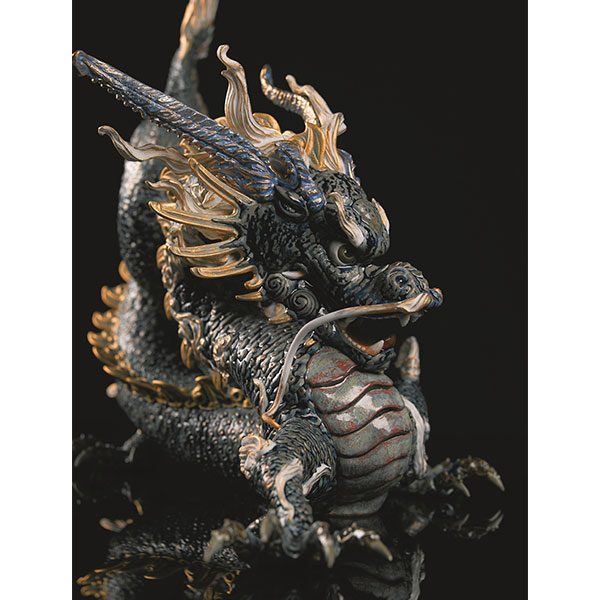
Lladro Great Dragon Blue
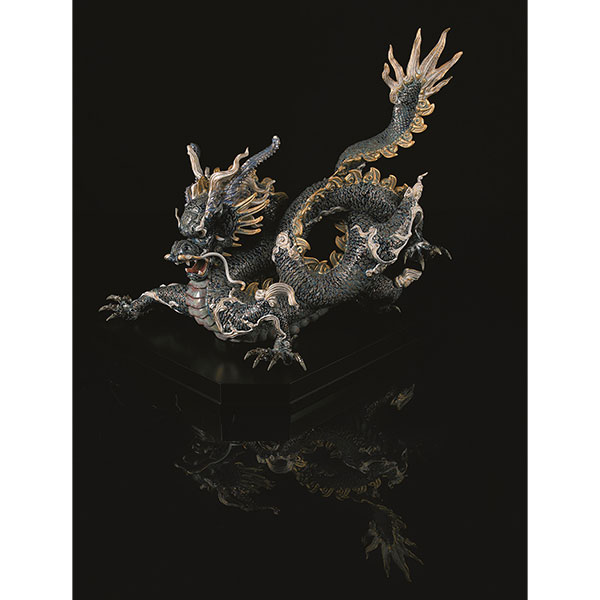
Lladro Great Dragon Blue Limited Edition
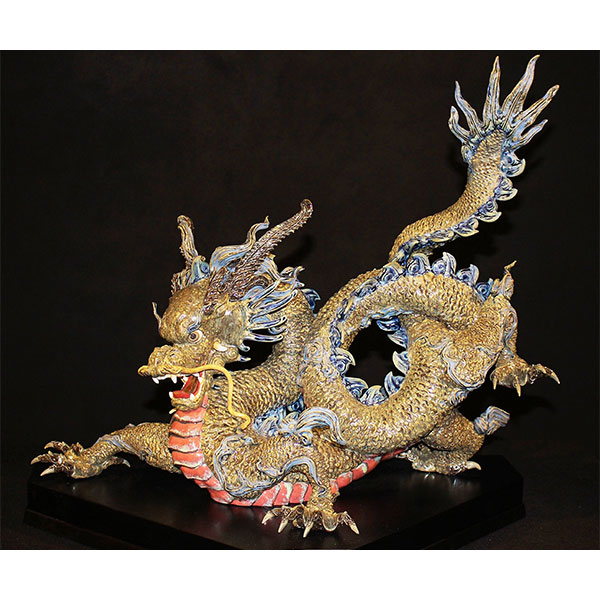
Lladro Great Dragon Green Color Trial
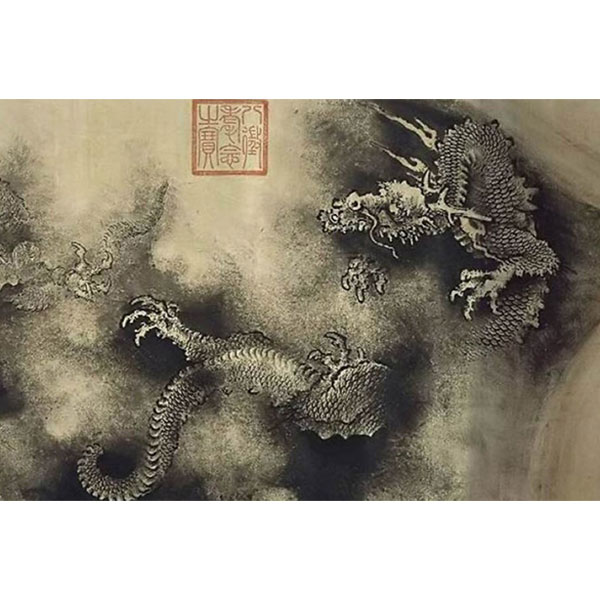
Chinese Dragon
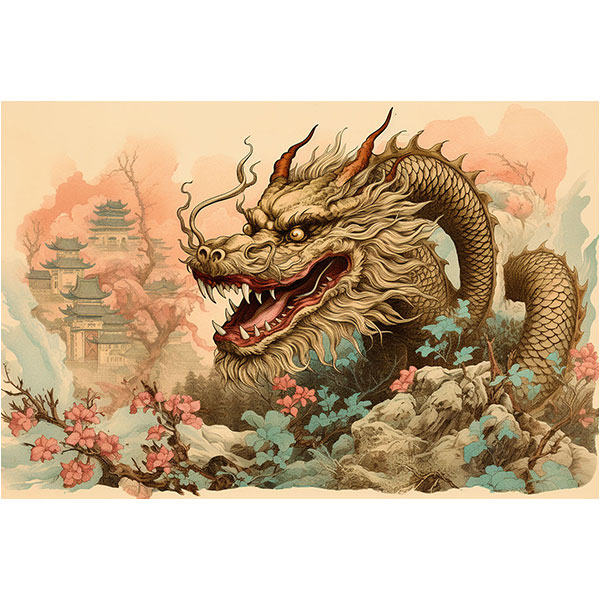
Chinese Dragon
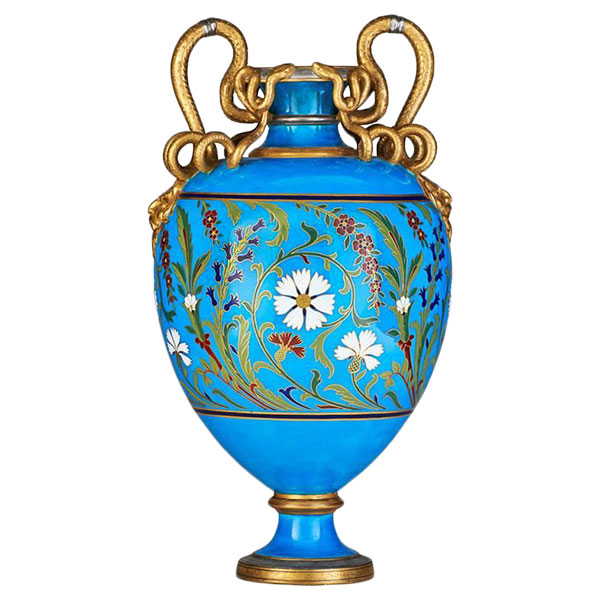
Minton Bleu Celeste Vase C. Dresser
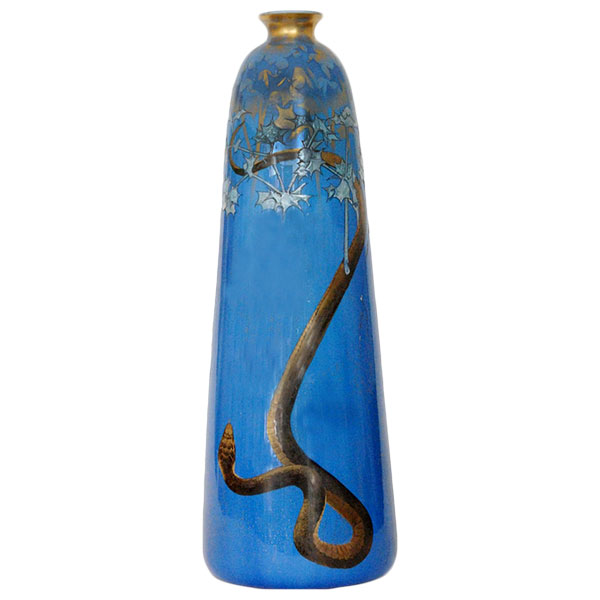
Clement Massier Snake Vase
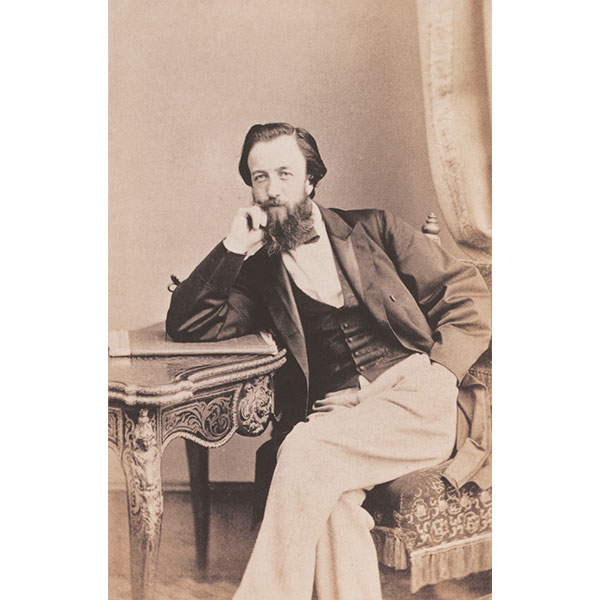
Christopher Dresser
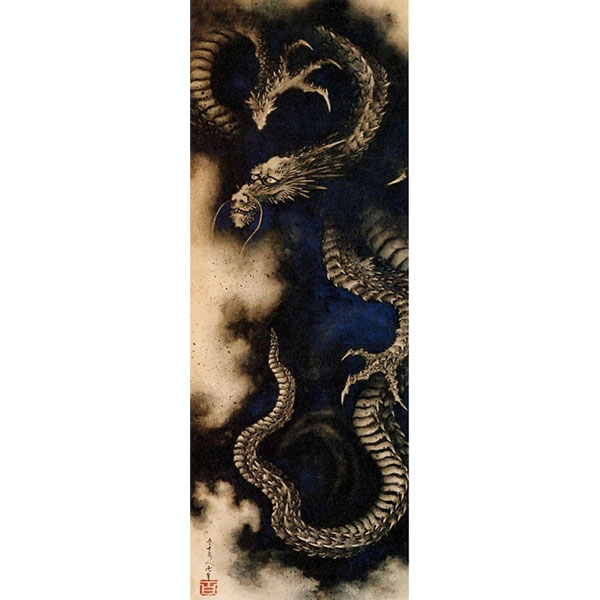
Dragon in Rain Clouds Hokusai
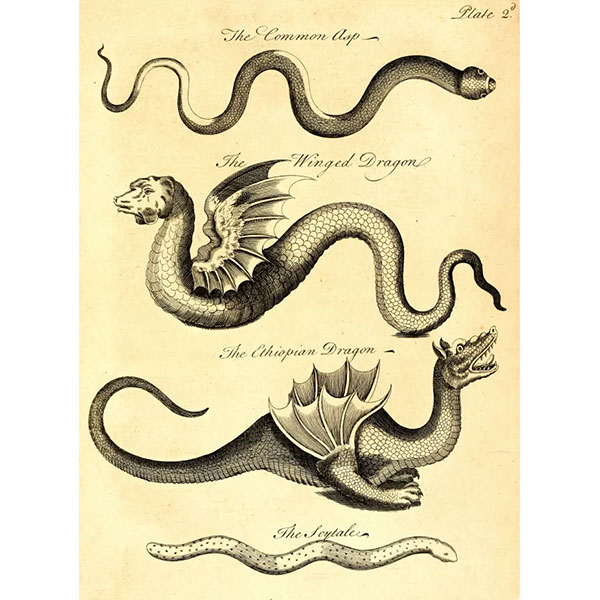
17th Century Engraving Matthaus Merian
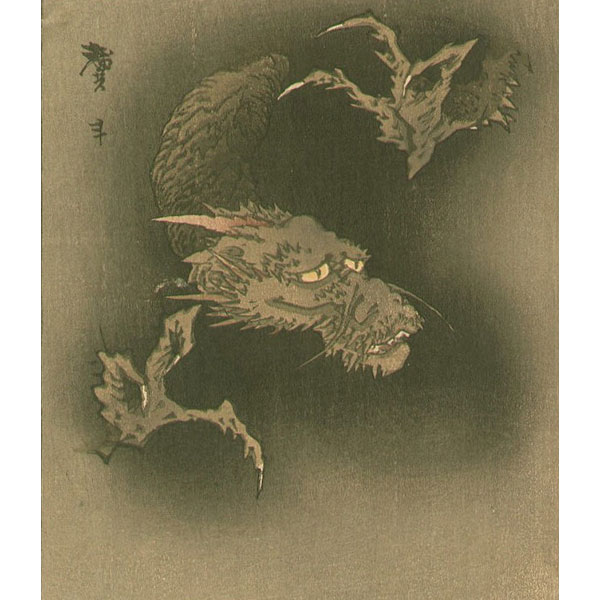
Japanese Dragon by Hokusai
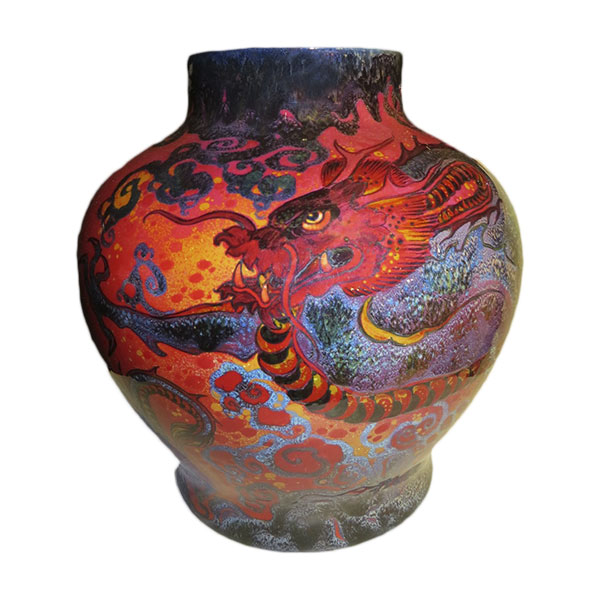
Royal Doulton Sung Dragon Vase
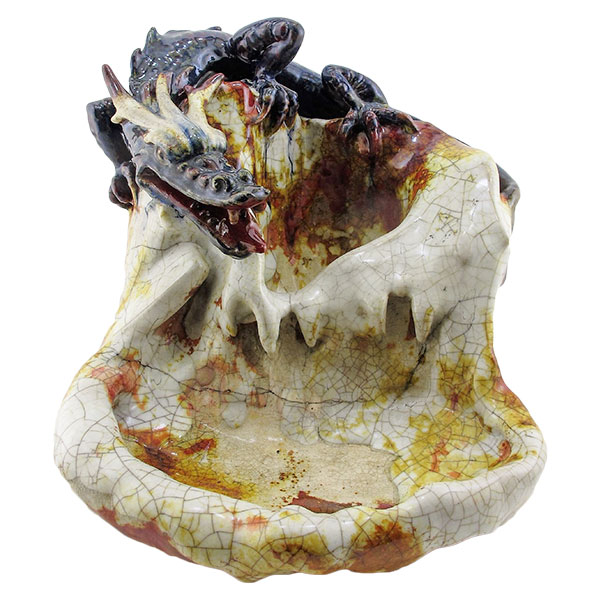
Royal Doulton Chang Dragon
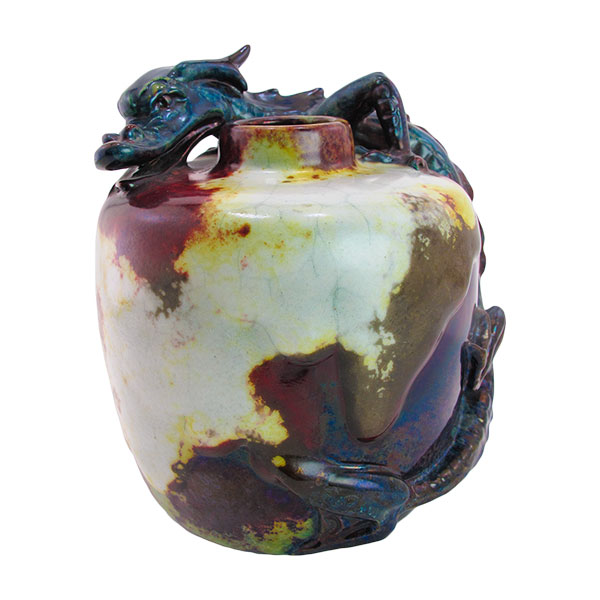
Royal Doulton Chang Dragon Vase
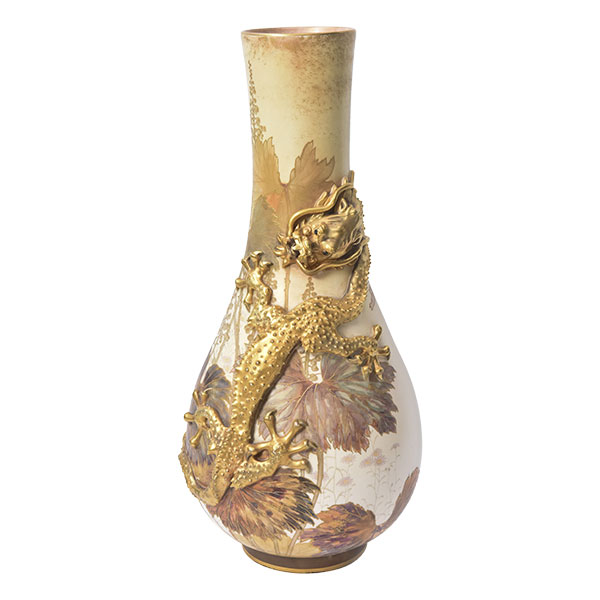
Doulton Burslem Dragon Vase C.J. Noke
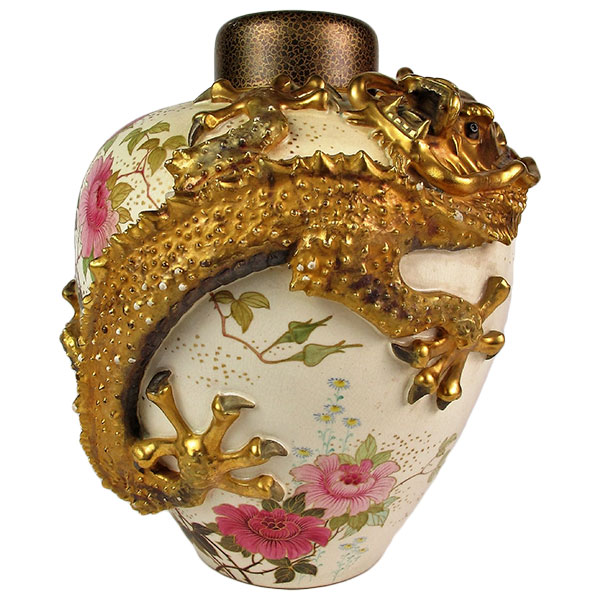
Doulton Burslem Dragon Vase C.J. Noke
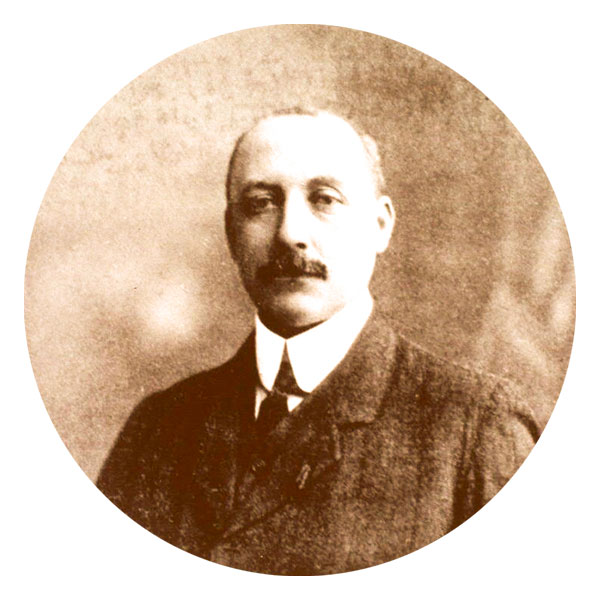
Charles J. Noke
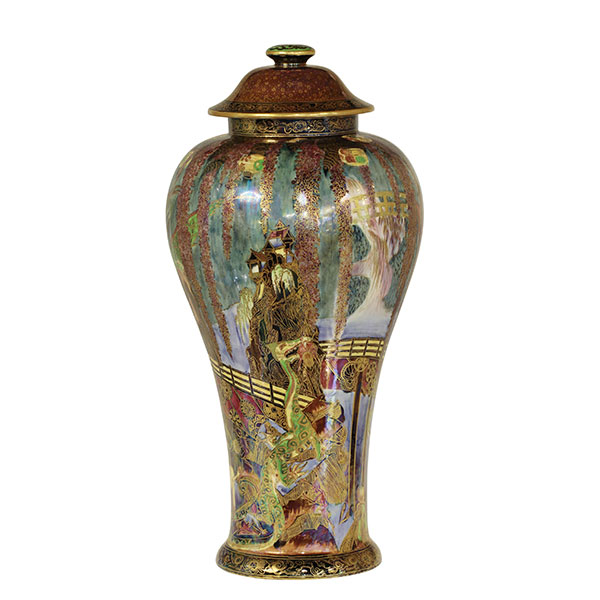
Wedgwood Temple on a Rock Covered Vase
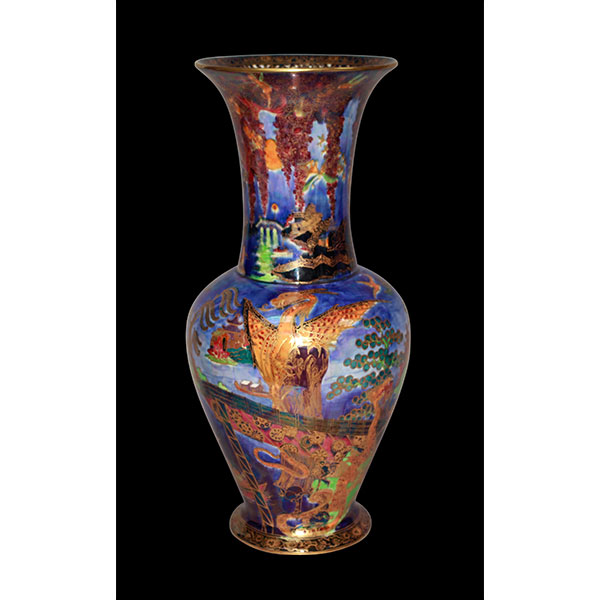
Wedgwood Fairyland Lustre Dragon King Vase
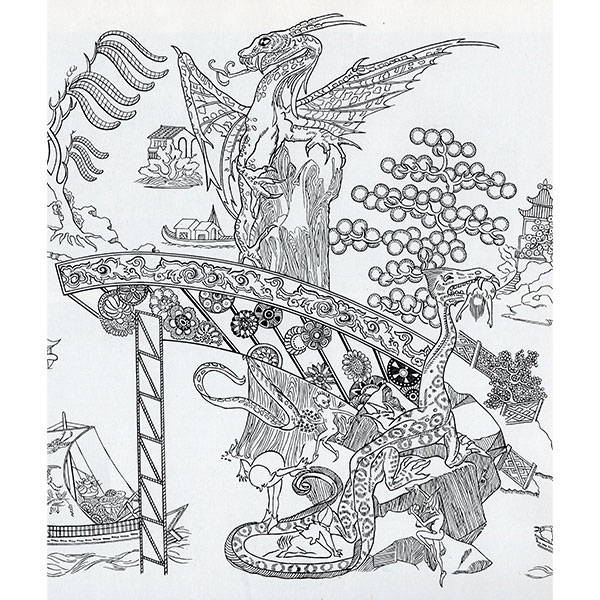
Dragon King Pattern D. Makeig-Jones
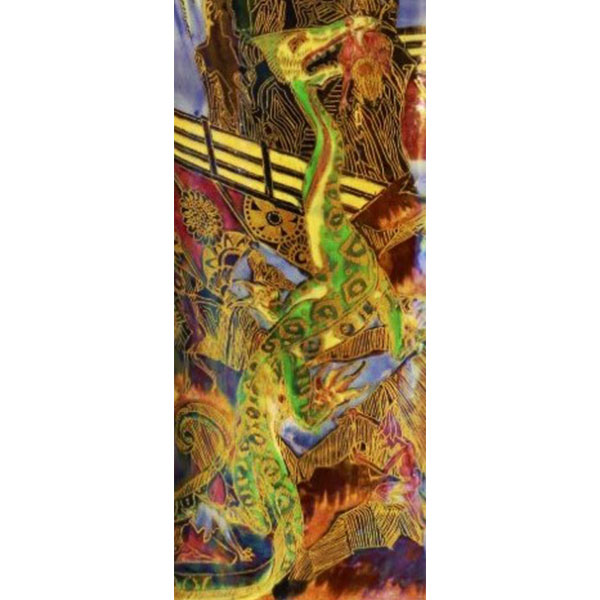
Dragon Queen Detail
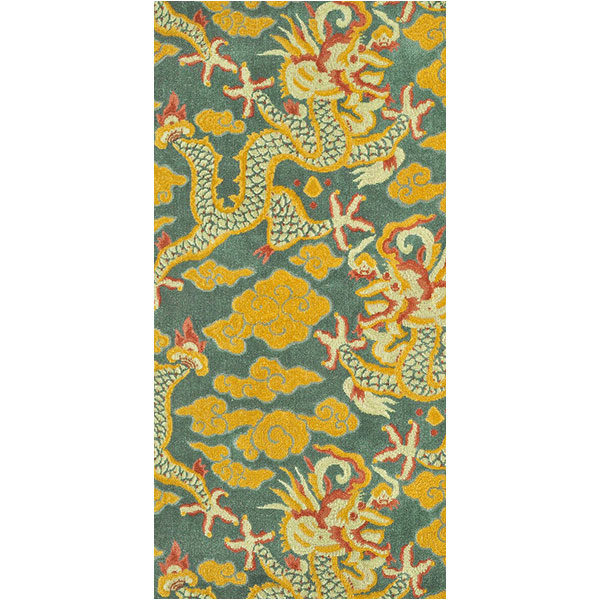
Claremont House Tatsu Fabric
